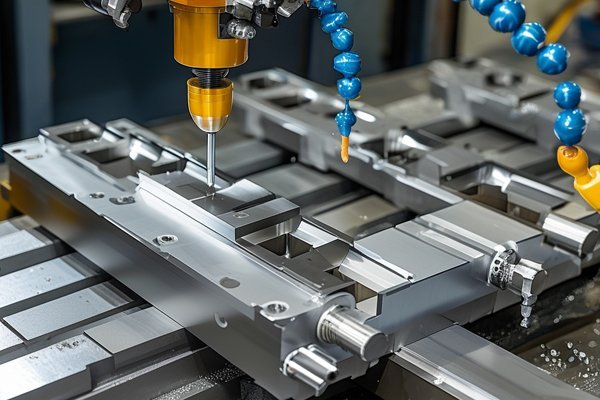Did you know that the global composite materials market was valued at over $29 billion in 2020 and is projected to reach approximately $49 billion by 2028? This exponential growth signifies not just a shift in manufacturing methods but also highlights the increasingly important role that sustainability plays in today’s industrial landscape.
In an era marked by environmental challenges, manufacturers are recognizing the critical necessity of adopting sustainable practices. But what exactly does that entail when comparing composite materials to traditional materials? This blog delves deep into the contrasts, advantages, and methodologies that set sustainable practices apart in the realm of composite materials.
to Composite Materials
Composite materials consist of two or more constituent materials with significantly different physical or chemical properties. These materials combine to produce a material with characteristics that differ from the constituent materials. Examples of composites include carbon fiber-reinforced polymer (CFRP), glass fiber-reinforced polymer (GFRP), and metal matrix composites (MMCs).
The Rise of Sustainability in Manufacturing
The push for sustainability is driven by the realization that traditional manufacturing processes often result in substantial waste, pollution, and resource depletion. By employing sustainable practices, manufacturers aim to reduce their ecological footprint, optimize resource usage, and adhere to increasingly stringent regulations.
Breaking Down Traditional Materials vs. Sustainable Composite Practices
Traditional Materials:
Manufacturing processes for traditional materials often rely heavily on non-renewable resources. For instance, obtaining metals like aluminum or steel typically requires extensive mining operations, leading to habitat destruction and significant carbon emissions.
Sustainable Practices:
Conversely, sustainable composites can be derived from renewable resources. For example, bio-based polymers, such as polylactic acid (PLA) made from corn starch, present a more environmentally friendly alternative. The sourcing of raw materials in sustainable practices emphasizes renewable feedstocks, significantly reducing environmental impact.
Traditional Materials:
The production of traditional materials often involves energy-intensive processes, such as smelting metals at high temperatures, which can release greenhouse gases and contribute to air pollution.
Sustainable Practices:
The manufacturing of composite materials can utilize composite infusion methods and advanced manufacturing techniques like 3D printing, which can minimize waste and lower energy consumption. Techniques such as vacuum-assisted resin transfer molding (VARTM) enable better material utilization and create less scrap.
Traditional Materials:
Many traditional materials suffer from a lack of recyclability. Often, products are discarded at the end of their life cycle, contributing to landfills and environmental degradation. For instance, traditional thermoset plastics are notoriously difficult to recycle.
Sustainable Practices:
Sustainable composite materials can enhance recyclability. Some newer composites are designed to be disassembled and recycled after their service life. Manufacturers increasingly leverage recyclable thermoplastics and biodegradable natural fibers, fostering a circular economy.
Traditional Materials:
While traditional materials like steel and concrete are known for their durability, they can also be heavy and less efficient in specific applications, leading to higher operational costs.
Sustainable Practices:
Composites often exhibit superior strength-to-weight ratios. This lightweight characteristic can improve fuel efficiency in transportation applications, resulting in reduced energy consumption and lower emissions. For instance, using CFRP in the aerospace sector has led to significant reductions in fuel costs.
Case Studies: Successful Implementation of Sustainable Practices in Composite Manufacturing
To better illustrate the transition from traditional materials to sustainable composite practices, let’s examine a few noteworthy case studies:

Case Study 1: Boeing and CFRP Materials
Boeing has embraced sustainable composite practices by utilizing CFRP extensively in their 787 Dreamliner. Not only does CFRP have a lower weight compared to traditional materials, but it also allows for fuel-efficient designs. The use of these composites has reduced the aircraft’s fuel consumption by 20%, significantly lowering its carbon footprint over the aircraft’s lifespan.
Case Study 2: Biodegradable Composites in Consumer Products
Companies like Ecovative Design are producing biodegradable composite materials for various applications, from packaging to construction. Their mycelium-based composites break down effectively in natural environments, minimizing waste. This approach not only showcases sustainable materials but also emphasizes responsible sourcing and disposal.
Techniques for Implementing Sustainable Practices
Integrating sustainable practices into the manufacturing of composite materials requires a multifaceted approach. Below are some integral techniques manufacturers can adopt:
A. Life Cycle Assessment (LCA)
Conducting a Life Cycle Assessment helps organizations identify the environmental impact of a product from cradle to grave. By analyzing each stage—raw material extraction, manufacturing, transportation, use, and end-of-life—companies can make data-driven decisions to enhance sustainability.
B. Material Selection
Choosing the right materials is fundamental. Transitioning from virgin to recycled materials can significantly reduce environmental impact. For instance, using recycled glass fibers instead of virgin fibers not only decreases waste but can also cut costs.
C. Process Optimization
Adopting lean manufacturing principles enhances process efficiency. This includes techniques like Just-In-Time (JIT) production to minimize waste and overproduction. Emphasizing precision in manufacturing can also lead to lower energy consumption.
D. Employee Training and Engagement
Fostering a culture of sustainability begins with education. Training employees on environmentally friendly practices and encouraging innovative thinking can lead to improved practices across the board.
E. Collaboration with Suppliers
Developing ecosystems with suppliers focused on sustainability can maximize the benefits of renewable resources. Collaborations can drive innovation and improve access to sustainable materials.
Overcoming Challenges in Sustainable Practices
While the benefits of transitioning to sustainable composite materials are clear, several challenges persist:
Sustainable practices might involve higher upfront investments. However, long-term savings often outweigh the initial costs.
Many manufacturers are still reliant on traditional materials due to the limited availability of sustainable alternatives. Continuous research into new materials must be prioritized.
Navigating regulations surrounding materials can be complex. Staying informed and proactive is essential for compliance and competitive advantage.
In summary, the transition from traditional materials to sustainable composite practices represents a significant evolution in the manufacturing sector. By prioritizing renewable sourcing, efficient manufacturing processes, better end-of-life strategies, and durable, high-performance materials, industries can reduce their ecological footprint substantially.
The importance of this blog lies not just in its exploration of differences but in emphasizing the necessity of sustainable practices in contemporary manufacturing. As global responsibility toward climate change grows, organizations cannot afford to overlook sustainable materials. They serve not only to bolster a company’s reputation but also provide pathways for innovation and long-term viability.
Manufacturers, industries, and consumers alike must recognize the integral role of sustainable practices in shaping a more resilient future. The choices made today define the landscape of tomorrow. Embracing sustainable composite materials might just be the next big leap towards an environmentally friendly industrial revolution.






